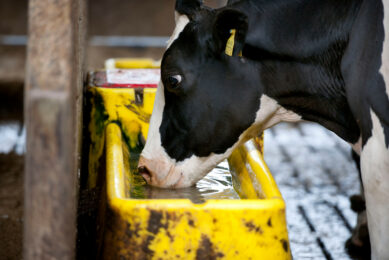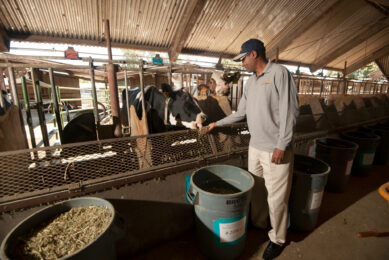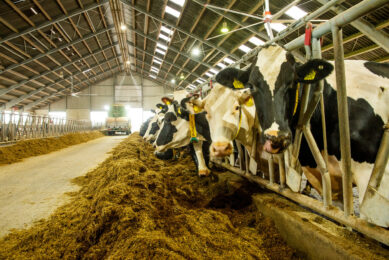FDA tightens use of cattle parts in feed
The US Food and Drug Administration (FDA) has ruled out the use of high-risk materials from cattle 30 months of age or older for use in all animal feed. This will prevent any accidental cross-contamination between ruminant feed and non-ruminant feed or feed ingredients.
US makers of pet food and all other animal feed will be prevented from using
certain materials from cattle at the greatest risk for spreading mad cow disease
under a rule that regulators finalized on Wednesday.
Contamination could
occur during manufacture, transport or through the accidental misfeeding of
non-ruminant feed to ruminant animals.
Canada and the United States
already banned the use of protein from cows and other ruminant animals such as
goats and sheep in cattle feed in 1997, following a mad cow outbreak in
Britain.
The final rule, to be published in today’s
edition of the federal register, bans cattle parts including:
- The entire carcass of BSE-positive cattle
- The brains and spinal cords from cattle 30 months of age
and older - The entire carcass of cattle not
inspected and passed for human consumption that are 30 months of age or older
and from which brains and spinal cords were not removed - Tallow derived from BSE-positive cattle
- Tallow derived from other materials prohibited by this rule that contains
more than 0.15 percent insoluble impurities - Mechanically separated beef derived from the
materials prohibited by this rule.
The revised rule, amending FDA’s 1997 ruminant feed ban, is aimed
at further enhancing safeguards against BSE and will go into effect April 27,
2009. It was proposed Oct. 6, 2005, and FDA said it received more than 840
comments.
For regular updates on feed news subscribe here
to our free newsletter












